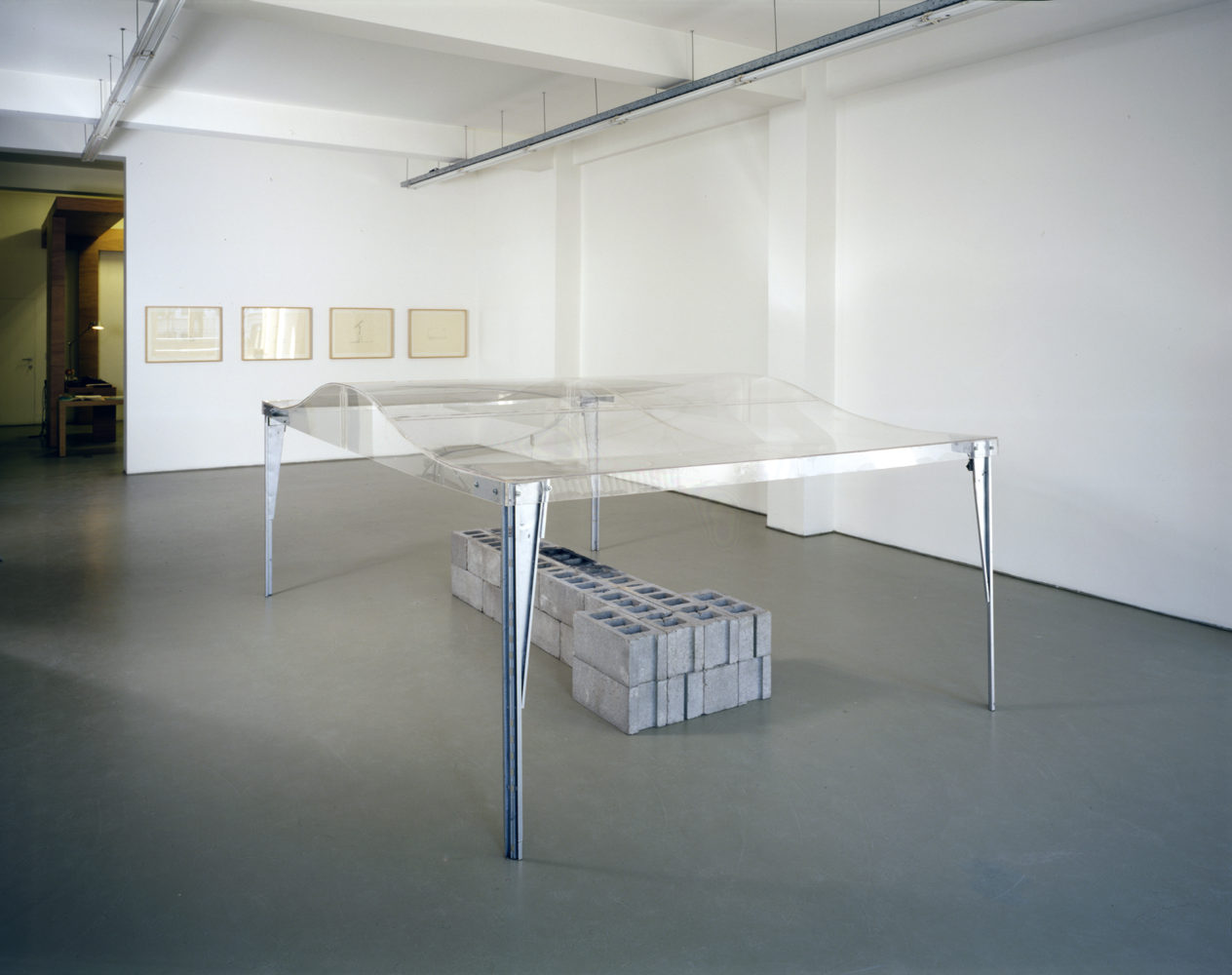This American sculptor (born in 1937 in New York) belongs to the generation of Minimalists. He took part in the historic exhibitions Primary Structures at the Jewish Museum in New York in 1966 and Minimal Art at the Gemeentemuseum in The Hague in 1968.
The early sculptures of the 1960s were defined by geometric forms produced through industrial processes, transforming the exhibition space. Toward the 1970s, Grosvenor turned toward solid wooden forms covered in oil, a kind of massive beam suggesting weight, a mute and inert presence in relation to the viewer. This archaic, primary quality moves away from the “Minimalist” designation, allowing for a more anthropological reflection marked by a different experience of time. This new orientation is further affirmed through the use of materials found in the outskirts of New York—car body fragments, corrugated metal, plexiglass, soft plastic, brick, and so on.
Robert Grosvenor appears to propose “precarious shelters,” temporary dwelling places constructed with modest materials. What had once been a form determined by the laws of industry gives way to an assembly of heterogeneous elements.
In his recent exhibition at the Kunsthalle Bern in July 1989, Grosvenor installed five large, monumental sculptures. These works required sustained attention from the viewer, an attentiveness toward humble materials that guided thought toward sociological associations, toward the idea of dwelling and bodily shelter.
In Brussels, the artist presents a monumental sculpture dated 1990, untitled, composed of concrete blocks, plexiglass, and painted steel. Here, a strong contrast is created through the differing densities of the materials used.
Concrete blocks rest on the floor, emphasizing the notion of weight, while above them a slightly curving “roof” of plexiglass appears as a transparent sign in space, positioned at the height of the viewer’s eyes. The two structural elements of the sculpture create a sense of protection—an “air-roof” sheltering the concrete masses.
The sense of strength and pleasure that emerges from these “house-shelters” recalls a quietly playful impulse.
Did we not all, in childhood, know the joy of building temporary houses?


